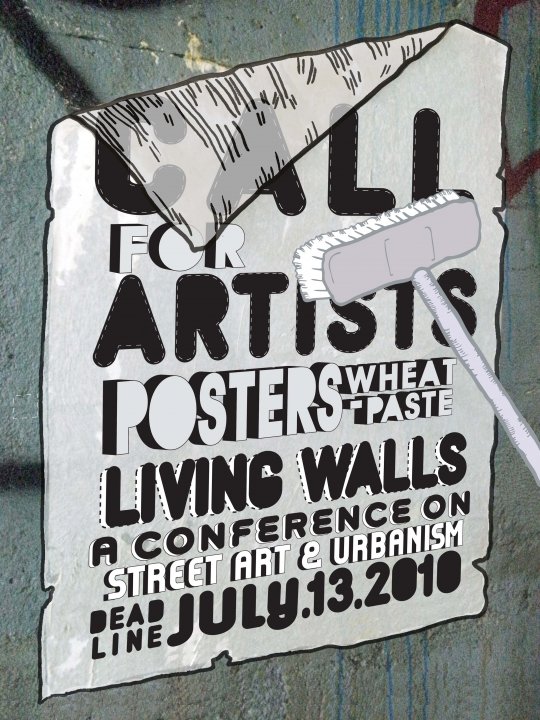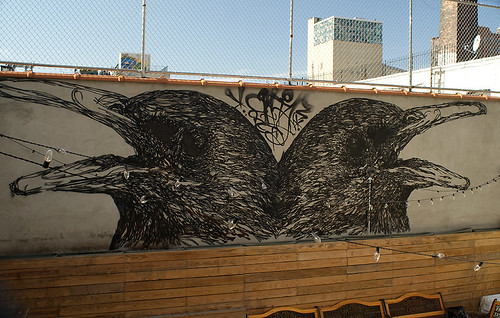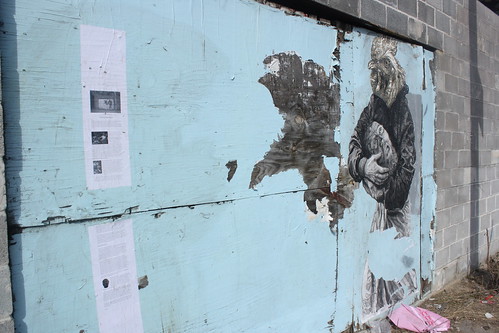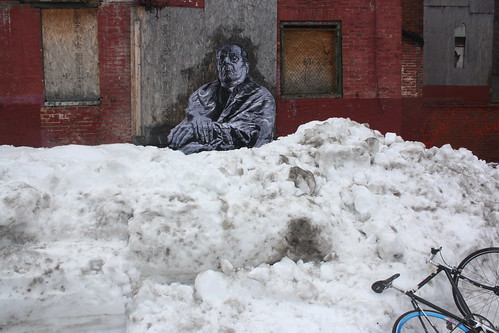Just put this piece up on Greenmount Avenue in Baltimore finally utilizing the patterns that I have been developing as of late. For more photos and contextual shots, check out the flickr site.
Just put this piece up on Greenmount Avenue in Baltimore finally utilizing the patterns that I have been developing as of late. For more photos and contextual shots, check out the flickr site.
Finally someone has smashed the Domino Factory. Adek and Nekst obviously killing shit, props to Luna Park on the photo

Just caught wind of these amazing Broken Crow murals in Austin that they did during SXSW. Props to the Street Spot for the documentation. Be sure to check out their new prints that they are releasing with the lion images http://www.brokencrow.com/blog/7-new-prints




http://www.flickr.com/photos/cahbasmn/


The artwork of 18 infuential street artists from around the world will food the streets of Atlanta as part of a coordinated effort to engage the public via street art. Living Walls, The City Speaks, a conference set to take place on the weekend of August 13, 2010 at Atlanta’s Eyedrum Gallery, has put out an international call for artists to submit posters to three locations on three continents. These posters will ultimately be sent to Atlanta to be wheat-pasted on public walls and at Eyedrum. With many more artists expected to take part in this event worldwide, come August, Atlanta’s urban landscape will have a more vibrant, international feel. Along with changing the urban landscape by fooding the streets with art, the Living Walls conference has set out to highlight a number of problems facing the city. Living Walls is not just a showcase of art, but also an attempt to provoke much-needed dialogue. The organizers of Living Walls have also put out a call for speakers, attempting to provide a platform for local people to speak out about their neighborhoods and the use of public space. The conference will also bring in provocative keynote speakers, like Jordan Seiler of the Public Ad Campaign, famously known for committing the largest single act of anti-advertising to date. Atlanta’s Beltline has drawn the attention of developers and new urbanists nationwide. So much so, in fact, that the largest annual conference on urbanism, the CNU18, is scheduled to happen here in Atlanta in May. Living Walls seeks to provide a counterpoint to the CNU, whose expensive entry fee insures a limited audience of developers and academics. Living Walls is addressed to the public. It is completely free of charge, open to participation, and destined to be a thought-provoking event. In the truest sense, Living Walls is a grassroots colloquium recognizing that local people’s perspectives need to be heard on these issues and not just that of developers. Our intentions are simply to broadcast to the attendees a wide spectrum of ideas about public space. We hope that everyone leaves the event looking at the city, its walls, and how we interact with space differently. Furthermore, we hope to make Atlantans aware that they share challenges with urban dwellers across the globe. More information, along with a list of artists and speakers confrmed for the event can be found on: http://livingwallsconference.com
Check out their Facebook page, Twitter, and website. Should be an amazing event, can’t wait!

Just took advantage of spring break from school to travel between Baltimore, New York, Jersey City, DC and Philadelphia painting legal spots and pasting up street work. It all began with a wall behind The Woods in Williamsburg and then crossing the river to Jersey City with Dylan from the Jersey City Mural Program. Both went swimmingly besides a couple concerned police interrupting the painting session on the second night.


Continue reading “New Work in New York, Jersey City, Philadelphia and DC”
The germ of this particular collaborative project (full PDF of the essay here) between Hrag Vartanian and I, began a little under two years ago when someone on flickr called a fake New Yorker article to my attention that had been pasted up on N7th and Bedford in the epicenter of Williamsburg. Entitled “Canal Street Swoons”, the scathing feature was pasted abutting a piece that I had committed to the streets entitled Rachel and the Wolves. While the anonymous author was particularly trenchant in its tone regarding my and Elbowtoe’s work in comparison to Swoon, I was excited that my pieces had engendered such a vehement reaction within somebody that they wrote, designed and pasted their own essay on the street.

Often, artwork in the gallery space is contextualized and its full scope realized by a supplementary text that provides the insightful background material and motivation for the piece. These auxiliary words help to complete the work and neatly establish the piece as apart of a larger narrative. Alternatively, what is so intriguing about street art is that it exists within the space that it occupies more autonomously and mysteriously. There is no description of materials employed or sources referenced; there is rarely even an associated name or moniker present. Such a floating image without any support gives the work an enigmatic character that is intriguing but simultaneously opaque.
This collaboration attempts to bridge that gap between the viewer and the art’s broader situation by producing more points of access into the work. The adjacent text fills in the art historical gaps and suggests at the intention behind the seemingly ambiguous figure. Furthermore, it extends the physical conversation on the street by demonstrating another form of interaction with the environment. Personally, this is an exciting moment because I am hopeful that it will spur more street art criticism that will exist physically alongside its subject.
For a more extensive explanation of the piece, check out Hrag’s writeup on Hyperallergic. More photos after the jump
-Gaia
Continue reading “Collaboration between Hrag Vartanian and Gaia”
Amazing stop motion animation by Ericailcane
“In this way, via a constant bombardment of a hegemonic truth, corpo-political regimes control the means by which individuals seek to know, decipher, and act on themselves. Acting as if they were freea in within a liberal, democratic system of rule, the good consumer citizen is calculatedly and spatially constructed.”
BC Biermann, a PhD Assistant Professor of Film/Media Studies California Baptist University – Riverside has recently published a paper on “Spatial Distributions of Power: Illegal Billboards as Graffiti in Los Angeles.”
Check out the full article here
via http://antiadvertisingagency.com/ and PublicAdCampaign (duh)
-Gaia

In central Baltimore on Franklin Street. Once the snow melts the bottom half will emerge. Had to dig at least four feet of snow in front to get it closer to the ground. More Here
